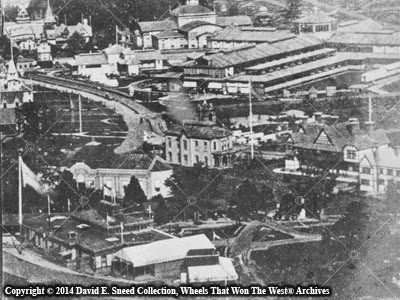By all accounts, the 1876 CentennialExposition in Philadelphia, Pennsylvania was an ambitious and momentousevent. Lasting six months, from May 10thto November 10th, this first World’s Fair was ostentatious with extraordinaryarchitecture showcasing countless treasures and innovations of the knownworld. The Exposition included over 200buildings and 30,000 exhibits spread over 450 acres. Among the vast technology displayed wasAlexander Graham Bell’s telephone and a Remington typewriter as well as a mechanicalcalculating machine (a precursor to today’s computers). This half-year celebration in honor of thesigning of America’s Declaration of Independence was heavily photographed andhosted almost 10 million visitors with countless promotional souvenirs handedout.
 |
| Rarephotos taken during the 1876 Centennial Exposition in Philadelphia. |
While original tickets and othermementos can be found today, there are less than a handful of themagnificent buildings that still exist. In like fashion, and in spite of the world-wide attention and extensivephotography at the event, very few records remain of the horse-drawnvehicles shown during this renowned pageant. Several years ago, I wrote an article called “A Ticket to Tomorrow” forour website and added even more details in our “Borrowed Time” book regardingone of the innovative wagons that was displayed at the Exposition. The wagon was built by Jacob Becker, Jr. ofSeymour, Indiana and was equipped with patented braking and steering designs. It took two full years to conclusivelyidentify the wagon in the photo as the one owned and shown by Becker. For an even longer period, that photograph and theactual Studebaker Centennial wagon (currently on display at the Studebaker National Museum) have been the only known surviving visuals of wagons shownduring this larger-than-life experience.
 |
| Aone-of-a-kind image showing Jacob Becker, Jr.’s “Champion Wagon of the West”shown at the first World’s Fair. |
Since the identification of the Beckerwagon (shown above), we've spent years looking for more records of wagons presented at this first World’s Fair. The persistence has paid off and, today, we’re celebrating the discovery of yet another photo of a vehicle demonstrated at this event. Ironically, this wagon appears to have been located very close to JacobBecker’s wagon display. This latestoriginal photo shows a patented crane-neck dray in full ceremonial style; ornate striping,exquisite woodwork, and an exclusive design. It was built by John Beggs & Sons of Philadelphia. The firm was known for quality fabrication ofnumerous wagons and city vehicles. Thephoto immediately below is excerpted from the image which shows the entirewagon. It was taken on the grounds ofthe Exposition in 1876. As a point ofreference, the photo was likely taken just weeks before General Custer met hisdemise at the Battle of the Little Big Horn.
 |
| JohnBeggs & Sons displayed an exclusive dray design at the PhiladelphiaExposition. |
We have another century-plus-old book inthe Wheels That Won The West® Archives that gives us even more detail on thecolor, features, and striping of the vehicle. In fact, it is possible that enough details are now available that areplica could be built in honor of America’s 250th Anniversary in 2026, lessthan a dozen years from today. Below ispart of the 1867 patent for the vehicle. Collectively, these ultra-rare resources are helping us put the piecesback together for what effectively introduced America as a new industrialworld power.
With fewer than 3 dozen wagon builderscompeting for attention and awards at the Centennial Exposition – includinglegendary makes such as Milburn, Moline, Kansas, Jackson, Schuttler, Cortland,Studebaker, Fish Bros., and Wilson, Childs & Co. – it might seem that therewould be more details available. Regrettably, that is far from the case as each one of the discoveriesmentioned have required substantial effort to locate and recognize their significance.
 |
| JohnBeggs & Sons was granted a patent on their dray in 1867. |
With each find, though, there ishope - hope for future discoveries andhope for greater recognition of these pieces. Ironically, it’s that same hope for tomorrow that every exhibitor heldat that first World’s Fair. Today, itstill drives us to look forward in anticipation and expectation; a greatblessing of our democracy and the very foundations of American independence.
